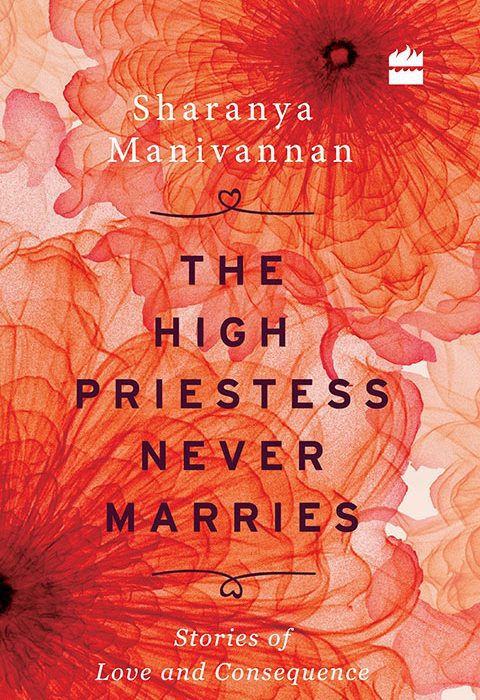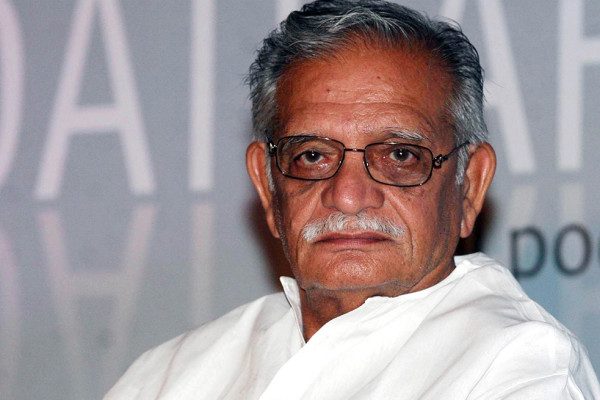Barnamala Roy reviews Sharanya Manivannan’s debut collection of short stories - The High Priestess Never Marries.
Longlisted for the Tata Literature Live First Book Award for fiction, Sharanya Manivannan’s The High Priestess Never Marries is her debut collection of short stories, alternately titled “Stories of Love and Consequence” and published by Harper Collins, India. Chiefly known by her first book of poetry, Witchcraft, the stories compiled for The High Priestess Never Marries (previously published in journals and anthologies) retain a dominant lyrical strain. Her fiction is marked by a wide range of women characters, whose psychological development remains uncharted, because they are projected as already mature- wedded to their destiny and acting as ‘sviya’ (she who is her own wife). The book journeys inwards and apart from the sensual delights that are formative of the women’s psyche, biographical detailing is kept minimal, dissociating them from the constraints of a particular time frame. Contemporary in terms of the life choices the women can make, their predicament remains deeply invested in the long tradition of deprivation faced by the female clan.
Contemporary in terms of the life choices the women can make, their predicament remains deeply invested in the long tradition of deprivation faced by the female clan.
The Goddesses And The Women
The tradition of deprivation is alluded to by the raging and tormented goddesses, who emerge at various points in her stories. Human and divine emotions intersect for Manivannan. She recognises female rage- in the figures of a) Kali, “the goddess of weddings and beheadings” encountered in a dirt alley amidst a bamboo grove, b) “The Ancestress” abandoned on her wedding day and subjected to her fate of a life-long ‘virgin’ (a state of being more particular to the mind than the body, says Manivannan). The offerings of worship to an incensed Kali purges the protagonist’s mind which was stricken by the memories of a lost lover. Again, by marrying the idol of the ancestress, the narrator frees her from the role of a protector that she unwillingly had to enact. More than faith, Manivannan’s women characters find solace through attraction and sympathy for the wronged goddesses.More than faith, Manivannan’s women characters find solace through attraction and sympathy for the wronged goddesses.
Mood, Metaphor And Similes
The mood of the book is set by a resignation towards life in the opening story, “Self-Portrait“. It spells the approach of senility for the female protagonist and she adopts a stance that refuses to be either overwhelmed by life’s calamities or lose sight of even the minutest beauty. Memory (of past loves) is often separated from desire, contrary to Eliot, who mixes them in “The Wasteland”, as desire in her stories is more of a longing that lingers after memories have soured. Manivannan hints at the fatality of desire- in how we want the things we do not want in stories like “Greed and the Gandhi Quartet”, but we do not see the fatality unfold. We rather observe how it lives precariously “at the edges without plunging” through passing images like a cat on the ledge of a roof. In the abundance of metaphors and similes that Manivannan employs in her stories, the “weight of love” or melancholy often translates to a celebratory extravagance. Melancholy is elongated as the long-stalked lily, delicate and enduring in “Sandalwood Moon”, for instance.In the abundance of metaphors and similes that Manivannan employs in her stories, the “weight of love” or melancholy often translates to a celebratory extravagance.
Self-Reflexive Nature
The melancholy running through the stories is tempered when the author anchors you back in reality with observations like: “All Indian men are secretly terrified of women. It’s the state of the nation.” With a sweeping generalisation like that which may even earn her the ‘anti-national’ label (one never knows these days), she made me wonder if crimes against women that refuse to abate in our country is symptomatic of a terror internalised by men and violently manifested. The title of the book- The High Priestess Never Marries– appeared rather dramatic to me at the outset and smacked of a ‘holier-than-thou’ attitude. But in the story which is eponymous to the title, the protagonist appears to self-reflexively ridicule the title which reflects the way she and other women in the collection are positing themselves. She utters how the high priestess never marries in a manner- “stylish as cinema, sexy as smoke, unforgettable as trauma”.But in the story which is eponymous to the title, the protagonist appears to self-reflexively ridicule the title which reflects the way she and other women in the collection are positing themselves.
Marriage And Infidelity
The woman never lets go of her autonomy even as she is willing to partake of the cooperation that marriage demands, making her distinctly modern in the “Cyclone Crossing.” In her past lover, Guru’s inquiry about whether she even understands the import of the word ‘husband’, marriage is subtly critiqued as an arrangement- a marriage that has otherwise no reason for discontent. Infidelity towards one’s partner is a shadowy terrain where it is difficult to grasp who wrongs and who is wronged. From the ‘boy-toy’ in “Gigolo Maami”, the level-headed Shravan in “Cyclone Crossing” to the unwitting Ravi in “Afternoon Sex”, men are as much victims, albeit often self-willing, in makeshift arrangements as women are. Redundancy of love triangles does not mark the stories as the women are rarely confused. In “Afternoon Sex”, for instance, the extra-marital bond does not arise from a lack of reciprocation within the marriage, but because of a decisiveness in retaining both the unions that dispels the need to choose.Redundancy of love triangles does not mark the stories as the women are rarely confused. In “Afternoon Sex”, for instance, the extra-marital bond does not arise from a lack of reciprocation within the marriage, but because of a decisiveness in retaining both the unions that dispels the need to choose.
Culture, Topography And Stylistic Variety
The story, “Conchology” crosses borders of South India to Paris, alludes to linguistic coincidences and intersects mythologies and cultures. Sarala Kali, the fisherwoman (one of the most human elements in the book) is the epitome of multilingualism. Her sensitivity to humour and resilience draws the protagonist back to her with the pretext of photography. The story too is stylistically different from the rest in the book, divided into sections like “Sins”, “Tongue”, “Oppari”, and “Nepenthe”. Another short tale- “Mango Wood Drum”, adopts the tone of a juvenile girl besotted in the wistful repetition of the phrase “if you were mine”.Tamil Nadu and Pondicherry loom in the backdrop through the sea, which has continued presence in the stories till the rocky Western Ghats take over in the last story of the book, “Sweetness, Wildness, Greed.”
The Culinary
Bodily pleasures are extended to elaborate details of food in Manivannan that is sure to attract your taste buds apart from strongly conjuring the traditions of her ethnic community. Cooking recurs in Manivannan’s stories, whether in the dishes prepared for Ravi in the “Afternoon Sex” or in the ‘dosai’-s prepared to quench after-sex hunger by the ‘boy-toy’ in “Gigolo Maami”. “Something like Grace” is a sumptuous story where the flavoured cooking of bitter gourds for the protagonist’s pregnant friend leads us to see how the meal becomes a psalm.In what offers a potpourri of emotions, Sharanya Manivannan’s The High Priestess Never Marries provides a meaty afternoon read to accompany your cup of chai.


